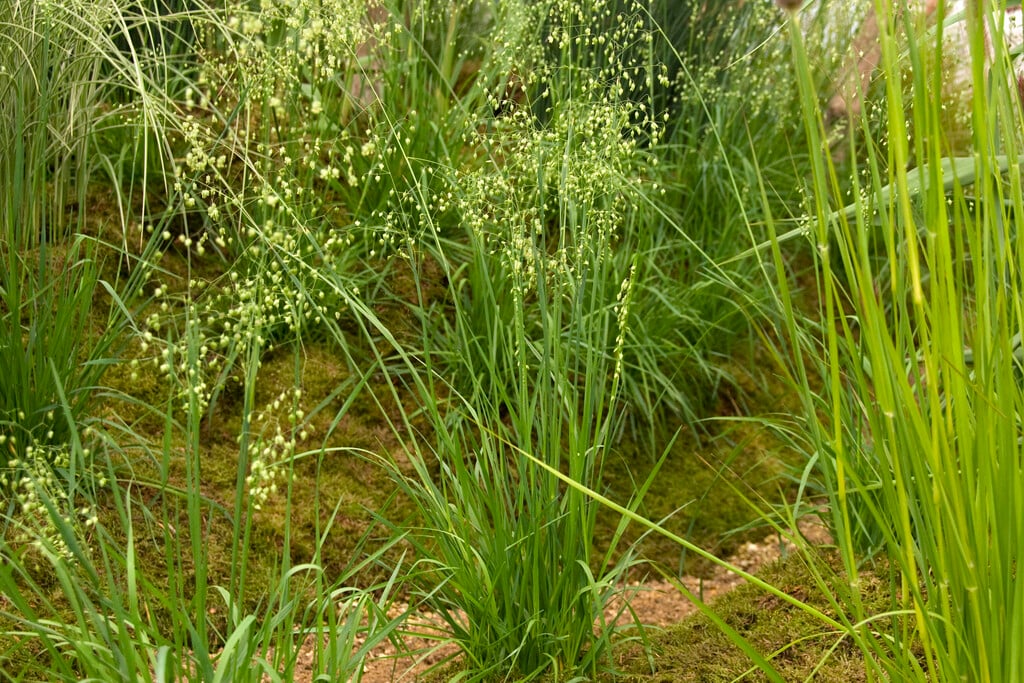Briza media
common quaking grass
A perennial, clump-forming grass to 90cm high with narrow, blue-green leaves. From late spring to summer, slender, upright stems bearing nodding, heart-shaped, purple-tinted green flowerheads appear that age to buff
Other common names
cow quakedidder
see moredithering grass
dodder grass
doddering dillies
doddle grass
earthquakes
jiggle-joggles
jockey grass
lady's hair
maidenhair grass
pearl grass
quake grass
quakers and shakers
shaking grass
totter
wagwants
crydwellt
Synonyms
Briza media f. microstachyaSize
Ultimate height
0.5–1 metresTime to ultimate height
2–5 yearsUltimate spread
0.1–0.5 metresGrowing conditions
Moisture
Well–drainedpH
Acid, Alkaline, NeutralColour & scent
| Stem | Flower | Foliage | Fruit | |
| Spring | Purple Green | Blue Green | ||
|---|---|---|---|---|
| Summer | Purple Green | Blue Green | ||
| Autumn | Blue Green | |||
| Winter | Blue Green |
Position
- Full sun
Aspect
South–facing or East–facing or West–facing
Exposure
Sheltered Hardiness
H7Botanical details
- Family
- Poaceae
- Native to GB / Ireland
- Yes
- Foliage
- Semi evergreen
- Habit
- Columnar upright
- Genus
Briza can be annual or perennial grasses forming dense tufts of linear leaves, with long-lasting, open panicles of nodding spikelets on slender branches; useful for dried flower arrangement
- Name status
Correct
- Plant range
- Eurasia
How to grow
Cultivation
Easy to grow in most well-drained soils in a sunny position
Propagation
Propagate by seed
Suggested planting locations and garden types
- City and courtyard gardens
- Cottage and informal garden
- Flower borders and beds
- Cut flowers
Pruning
No pruning required but flowerheads can be cut back in late summer to encourage new growth
Pests
Generally pest-free
Diseases
Generally disease-free
Get involved
The Royal Horticultural Society is the UK’s leading gardening charity. We aim to enrich everyone’s life through plants, and make the UK a greener and more beautiful place.
